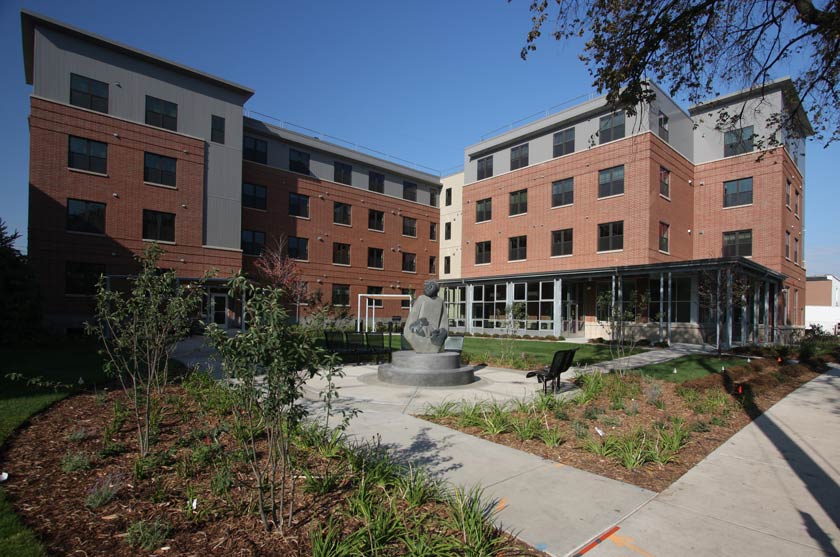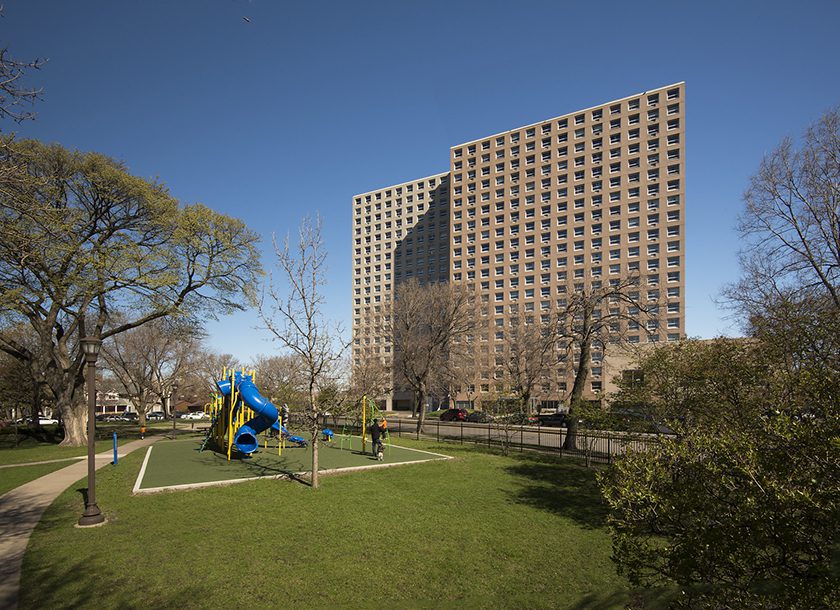

Kim Bretheim is the Housing Focus Leader at LHB and a professional architect with over 35 years of experience. Kim is committed to sustainable and high performance design and has been recognized with several design awards on student housing, commercial development, and supportive housing projects. In this interview, Kim shares some of his thoughts on sustainability and housing design at LHB.
What is innovative about LHB’s approach to Housing?
LHB has been at the forefront of envelope and systems design. The best example of this is in our work with Green Communities, a design guideline program. Ten years ago, Green Communities was a voluntary program, and we saw the value in it right away. We lobbied to make Green Communities a mandatory design criteria for affordable housing. We did this to shift the conversation from “this envelope costs too much” to “this is what we have to do, how much does it cost”. Ultimately we succeeded, and it has provided a benchmark for designers to achieve standards above code.
LHB is innovative in its approach to housing preservation. We work towards fixing up aged affordable housing to make sure the housing stock stays in the community. Again, a lot of this work deals with system enhancements and envelope design. Budgets for affordable housing are tight, and so our job is deciding how far we can go, using the most cost-effective way to use the allowed budget.

Why is sustainability important to affordable housing?
Rent for affordable housing tenants is determined by income and expected operation costs (utilities). If the design focuses on minimizing operating costs, it allows people to spend their money elsewhere. Depending on the type of affordable housing this can mean reinvestment in other aspects of the building or it can mean that tenants can now save more money.
Is there anything about sustainability that is particularly important to specific populations served in supportive housing?
Efficiency of compact layouts saves construction costs and allows for further investment in durable materials. While focusing on efficiency and compact design, we also work towards finding the right blend of privacy and community in our housing projects – supporting community interaction.
A lot of attention is paid to ventilation of HVAC systems which is traditionally thought of as a sustainability aspect. Each of the different resident types – student, senior and supportive housing – have specific needs, whether it’s aging or chemical sensitivities; HVAC plays a large role in the comfort of residents.

Do you have any thoughts on resiliency and how it might connect to the work that you do?
In the work that we do, the preservation side of affordable housing is promoting resiliency – doing what it takes to keep and protect the affordable housing units, and then enhancing them to current standards. Maintaining and enhancing existing housing stock is one way to look at resiliency and building resilient communities.
Often we are limited when it comes to selecting durable materials because of the concentration on the first cost. What we try to do is hit a sweet spot between durable materials and construction technology.
Another aspect of resiliency, which is more by default than by intent, is that we deal with a lot of brownfields. The sites are cheap leftover sites, often with issues of bad soil or formerly industrial sites, which is why our clients get them, but they are often in locations with great proximity to city amenities. Infilling forgotten lots and adding to the existing urban fabric is resilient.
For More about LHB’s Housing Focus see: https://lhbcorp.com/market/housing/

